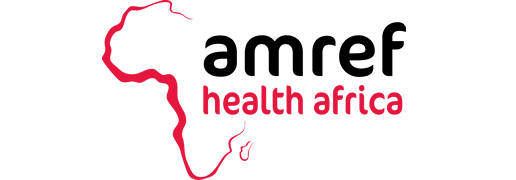If you’ve been engaged in healthcare financing discussions in Africa, you’ve likely encountered the call to achieve the ‘Abuja Declaration.’ This declaration calls on countries to allocate and spend a minimum of 15 per cent of their annual government expenditure on healthcare.
I like the Abuja declaration because it gives a clear and measurable target, leaving little room for debate. It provides a straightforward metric to assess which countries have met the goal, those that haven’t, and those worthy of celebration for their achievements. However, while the 15 per cent spending benchmark serves as a tangible indicator of a government’s commitment to healthcare, it falls short in addressing the broader determinants of population health.
On the flip side, the Abuja Declaration has its drawbacks. While its demand for a 15 per cent allocation is unequivocal, it often diverts attention from the fact that this target primarily focuses on financing healthcare service delivery. Yet, crucial factors that significantly impact health outcomes, disease reduction, and cost burdens like water sanitation and nutrition remain costed and accounted for elsewhere.
Analysis reveals that approximately 60 per cent of the 15 per cent allocation goes to inpatient care, outpatient care, and medical goods, with the remainder allocated to health system governance and administration. While some funds trickle down to maternal and child health services, this allocation fails to consider the broader spectrum of health determinants.
Further, the 15 per cent seems to be a single powerful measure but is weak because it assumes that 15 per cent of a chicken can achieve the same as 15 per cent of an elephant.
Let’s do some math.
The GDP of sub-Saharan Africa stands at 2 trillion (2024). Since social services like health are paid for largely through taxes, applying a 15% tax-to-GDP ratio puts total tax collections at $300 billion, and a 15 per cent allocation of these taxes to health would give us USD45 billion. Dividing this figure by the region’s population of 1.2 billion in 2024 yields a crude calculation of what may be available on average as Government General Expenditure on health per capita.
A meagre USD 37.5!
This starkly contrasts with Europe’s situation, where a GDP of USD20 trillion, a tax-to-GDP ratio of 41 per cent, a population of 448 million and a similar 5 per cent allocation to health result in a significantly higher per capita expenditure of USD2,600. The disparity is evident, with many European countries allocating up to USD4000 per capita while lagging nations like Bulgaria and Romania still allocate approximately USD1000.
Given the GDPs of sub-Saharan African countries, it becomes evident that no percentage, let alone the 15 per cent target, can adequately address healthcare needs under the current biomedical approach of waiting for people to get sick and treat. None.
This reality is reflected in the fact that 15 percent of the world’s population in high-income countries accounted for 80 percent of total global health spending in 2020, with one country, the United States of America, accounting for 44 percent of all spending. Low-income countries, with 8 percent of the world’s population, accounted for just 0.2 percent. Its population and economics.
The fixation on the 15 per cent benchmark, while crucial as a gauge of government dedication, poses the risk of directing all health advocacy efforts solely towards this proportion of healthcare funding, thereby diverting attention from the actual problem, which is health.
True health is the asset that stems from investments in education, particularly for girls, as well as in good nutrition, access to clean water and sanitation, unpolluted air, and an active lifestyle. However, none of these vital components receive adequate funding within the confines of the 15 per cent allocation. Consequently, this singular focus on healthcare financing has led to a suboptimal focus on critical sectors such as agriculture, water and sanitation, energy, security, and community empowerment – as the real building blocks of health.
Hospitals in Africa are inundated with children suffering from preventable diseases like diarrheal diseases, pneumonia, and malaria, causing significant care costs. At the same time, significant healthcare expenses are also directed towards managing maternal and neonatal complications. Additionally, there’s a rising burden of admissions for intensive care due to cardiovascular diseases, along with escalating costs associated with renal dialysis units and preventable cancers like cervical cancer.
Despite these pressing challenges, little or no part of the 15 per cent is used to address the causes behind these challenges. Whereas that may be okay, health advocates are highly distracted by healthcare financing instead of financing health.
Africa must look beyond its borders, across the Mediterranean Sea in Europe, to observe the average healthcare expenditures incurred, which are still inadequate despite over USD 4,000 per capita expenditure and long waiting times. We must ask ourselves whether even with 15 percent of total government expenditure allocated to health, those expenditures will ever be affordable, and the answer is clear—not in this generation or the next!
Given this realization, Africa must acknowledge its inability to afford healthcare and shift focus towards investing in health, which proves to be a more economical approach. This encompasses the core components outlined by the World Health Organization’s Health Systems building blocks – such as Service Delivery, Health Products and Technologies, Health Workforce, Health Information Systems, Health Financing, and Leadership and Governance – and a holistic approach.
This holistic approach involves maintaining healthy populations through disease prevention, health promotion, community awareness and empowerment, universal access to clean water and sanitation, and ensuring good nutrition. Furthermore, implementing pro-health food policies necessitates safeguarding citizens from harmful foods and beverages.
This imperative underscores the need for a new health order where planning for health starts with addressing the social and commercial determinists of health. Such a transformative approach should be our interpretation of the World Health Day theme; ‘My Health, My Right’!
The writer, Dr Githinji Gitahi, Group CEO, Amref Health Africa
Article first published on https://www.standardmedia.co.ke/health-opinion/article/2001493008/africa-cannot-afford-healthcare-but-can-finance-health
